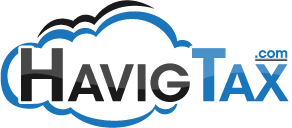Understanding Payroll: A Guide for Small Business Owners
Understanding Payroll: A Guide for Small Business Owners

Managing payroll is one of the most critical responsibilities for small business owners. It involves more than just issuing paychecks; it requires a comprehensive understanding of various components like taxes, employee benefits, and compliance with federal and state laws. Here’s a straightforward guide to help you navigate the basics of payroll, ensuring smooth operations and compliance. It also must be noted that here at Havig Tax, we highly recommend using payroll software, and we can recommend you to our preferred contacts.
Employee Classification: The first step in payroll management is correctly classifying your workers as employees or independent contractors. This classification impacts tax withholdings, benefits, and compliance obligations. Employees are subject to payroll taxes, and employers must withhold income taxes, Social Security, and Medicare. Independent contractors, however, handle their own taxes. Proper classification helps avoid legal issues and penalties.
Payroll Taxes: Employers are responsible for calculating and withholding payroll taxes from their employees’ wages. This includes federal income tax, Social Security, Medicare, and, in some cases, state and local taxes. Additionally, employers must contribute to Social Security and Medicare, known as FICA taxes. Keeping accurate records and timely depositing these taxes with the IRS is crucial to avoid fines and ensure compliance.
Employee Benefits and Deductions: Payroll also involves managing employee benefits such as health insurance, retirement plans, and other voluntary deductions. These benefits often come with specific tax implications and reporting requirements. Understanding how to accurately calculate and deduct these amounts from employees’ wages is essential. Employers must also comply with regulations like the Affordable Care Act (ACA), which mandates certain benefits for eligible employees.
Compliance and Record-Keeping: Staying compliant with payroll laws requires meticulous record-keeping. This includes maintaining records of wages, hours worked, tax withholdings, and benefits. Federal and state laws dictate the retention period for these records, often ranging from three to seven years. Utilizing payroll software can streamline this process, ensuring accuracy and efficiency. Regular audits and reviews of payroll practices help identify and correct any discrepancies, maintaining compliance with ever-evolving regulations.
By understanding these fundamental aspects of payroll, small business owners can ensure accurate and compliant payroll management. This not only helps avoid legal issues and penalties but also fosters a positive work environment where employees are paid correctly and on time. If you need assistance with managing your payroll, consider consulting with us to ensure you stay on top of all requirements and changes in regulations.
Quick Links
Contact Information
Business Hours
- Mon - Fri
- -
- Sat - Sun
- Closed















